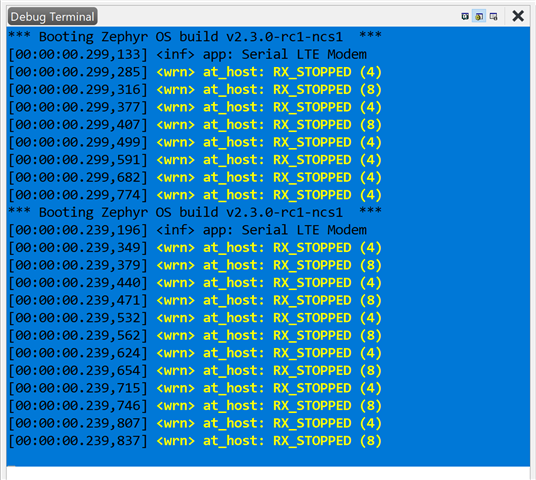Hi,
I have a custom board based on nRF9160 for which I created custom .dts following porting guide.
It seems TX isn't sending anything (stay close to 0V) - config I have is: tx-pin = <8>; rx-pin = <9>;
for &uart0, no handshake, reset level at 2.7V.
Checked prj.conf and .config they settings there seem alright. Please advise, what I might be missing here?
Thanks.



